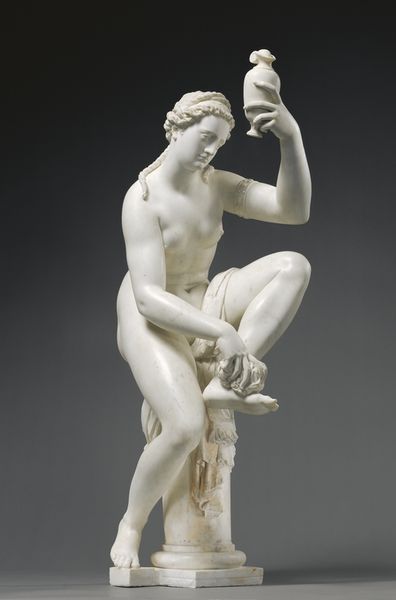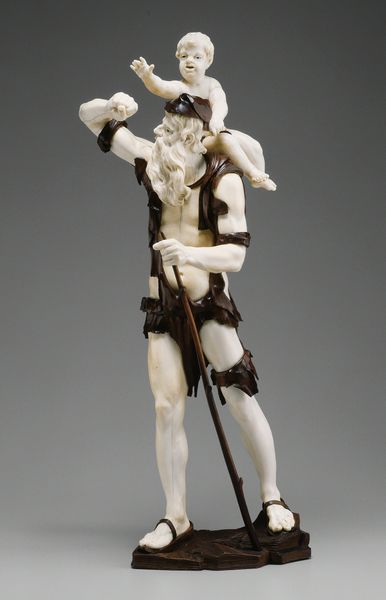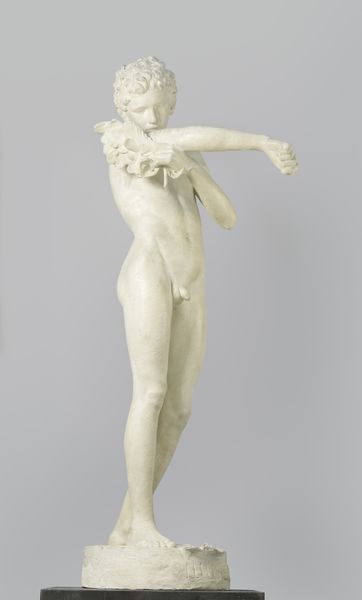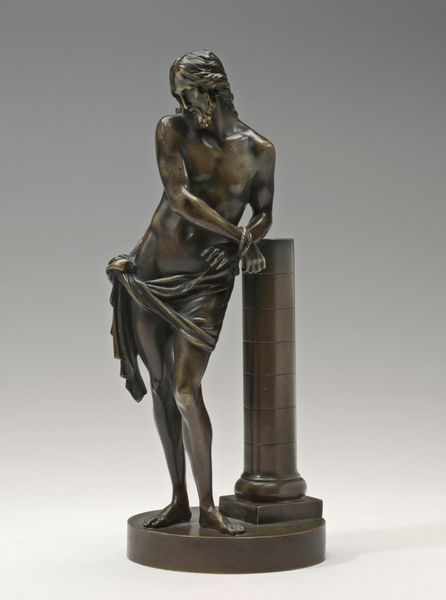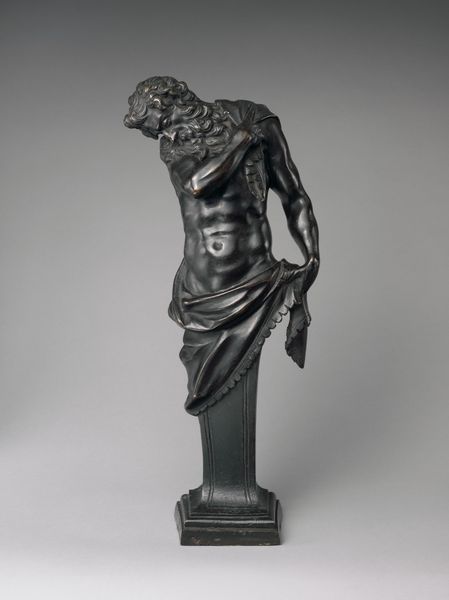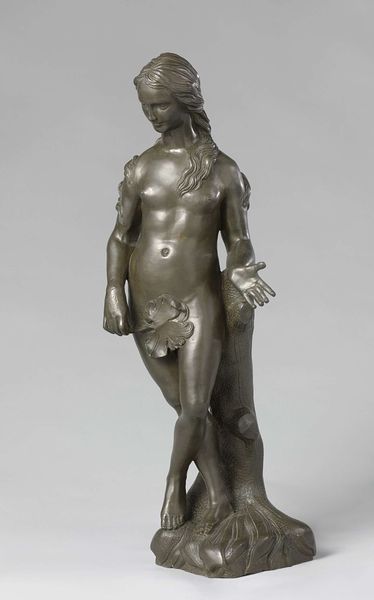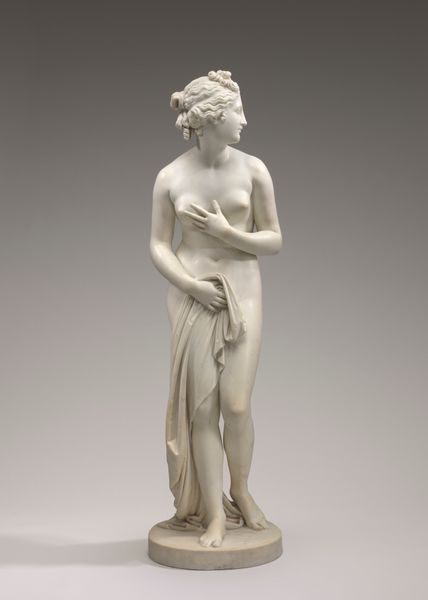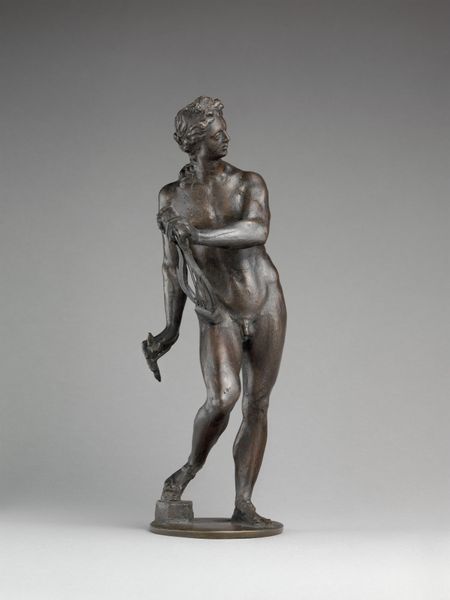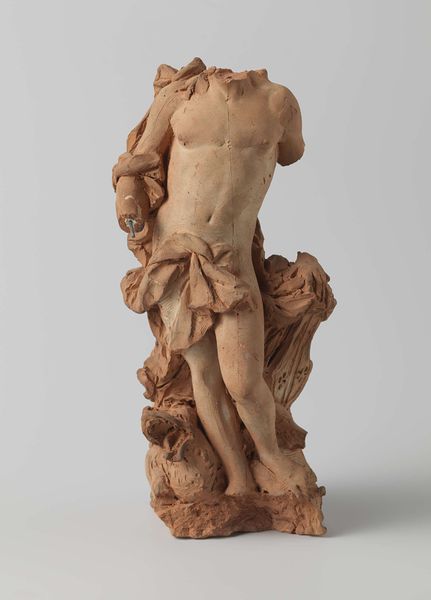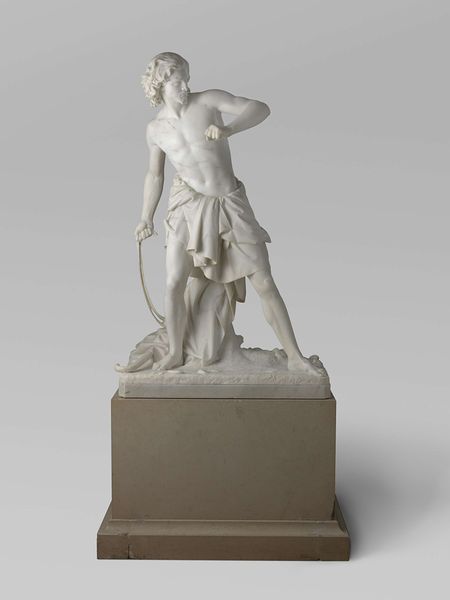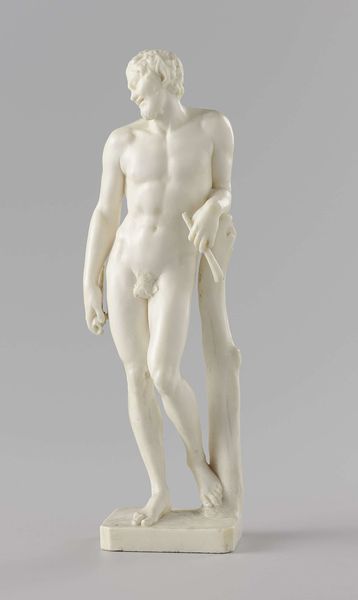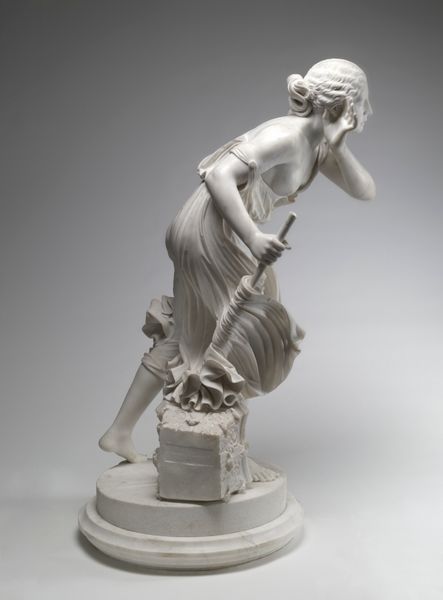
sculpture, marble
#
portrait
#
baroque
#
figuration
#
sculpture
#
marble
Dimensions: height (with integral plinth): 32.8 cm (12 7/8 in.)
Copyright: National Gallery of Art: CC0 1.0
François Duquesnoy, who died in 1643, carved this small ivory figure of Christ. It represents a key moment in the Passion of Christ - a moment in which Christ's body is subjected to the violence of worldly authority. Let’s consider the context. This sculpture was made in Rome, a city then dominated by the Catholic Church. The Church played a huge role in the lives of people, and it was an important patron for artists. Ivory was a prized material, one that gave an exquisite finish. But the whiteness of the ivory is also important. It speaks to the purity of Christ's body, an idea central to the Church's teachings at the time. Duquesnoy uses classical ideas about beauty, but invests his figure with a new degree of emotional realism. But what statement is he making here? Is he reinforcing existing power structures or challenging them? As art historians, we can look to the archives and libraries to investigate the artist's life and the world in which he lived. Only then can we better understand the meaning of this compelling sculpture.
Comments
No comments
Be the first to comment and join the conversation on the ultimate creative platform.
